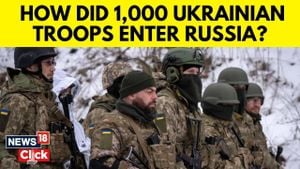Immigrants living in the United States are often at the center of heated discussions, particularly around their involvement with crime. Many critics believe there is a direct link between immigration and rising criminal activity. Yet, contrary to these beliefs, research consistently reveals immigrants commit crimes at lower rates than those born within the U.S. This includes various immigrant groups, even those who are undocumented.
Evidence suggests not only do immigrants infringe upon the law less than the native population, but they might actually help lower crime rates, particularly violent crime, when they settle in communities fostering inclusive policies. The presence of well-established immigrant populations seems to correlate with safer neighborhoods, presenting evidence against the idea of immigrants being natural threats to public safety.
Numerous national studies examining incarceration rates and legal proceedings involving immigrants find they are prosecuted and imprisoned at significantly lower rates than American-born citizens. This trend has persisted for over 150 years, with data from as far back as 1870 indicating immigrants have been less likely to be incarcerated. Recently, studies reveal immigrants were 60% less likely to face imprisonment than those born in the U.S. as of 2020, according to the National Bureau of Economic Research. But the figures go even beyond just incarceration.
While the U.S. Department of Justice noted growing prosecutions of immigrants between 1990 and 2018, nearly 90% of these involved immigration-related issues, demonstrating focus on noncriminal violations. Comparatively, U.S. citizens are ten times more likely to be jailed for weapons offenses, five times more likely for violent crimes, and drastically more likely for other offenses as well, like property crimes and drug offenses. These discrepancies suggest the narrative linking immigrants with crime is fundamentally flawed.
At the state level, studies across various regions portray no transparent relationship between rising violent crime rates and increased immigration. Analysis focused on urban areas often shows how increasing numbers of immigrants actually connect with lower homicide tendencies, particularly prevalent where immigration has historically been welcomed. This observation applies to various crime categories, indicating immigrants typically represent less risk as either offenders or victims.
Looking closely at unauthorized immigrants flips some preconceived notions upside down. Though residing illegally constitutes violation of administrative law, it doesn’t equate to heightened tendencies for both petty or serious crimes compared to native-born citizens. Highlighting the data from Texas sheds light on this argument, as it uniquely compiles detailed records of arrests and convictions categorized by immigrant status.
According to research published by the Texas Department of Public Safety, people immigrated to the state—regardless of their legal status—were arrested for violent and drug crimes at less than half the rate of the U.S. born. When it came to property crimes, they were caught at around one-quarter of the rate of native-born individuals. These statistics show unauthorized immigrants demonstrate lower rates of crime overall.
Undocumented individuals are particularly noteworthy as they consistently display the lowest rates of lawbreaking compared to both U.S. citizens and legally presented immigrants. This paints the portrayal of unauthorized individuals as everyday law-abiding residents, contrary to prevailing stereotypes.
The overall crime conditions documented by Texas are particularly illustrative, as they clash with the widespread assumptions around immigrants and crime. For years, fears have been politicized, leading many to believe their local safety was compromised due solely to higher numbers of newcomers. The studies instead reveal quite the opposite, showcasing how border states and urban areas embracing immigrant populations can experience significant drops in crime.
While unauthorized immigration presents challenges, most issues arise from broader systemic failures rather than any direct connection to crime. Localities dealing with significant immigrant inflows continue to find ways to provide aid and preserve community safety. These towns and cities often implement comprehensive approaches to crime prevention, acknowledging the community's diverse makeup and establishing supportive mechanisms, which promotes coexistence.
Given the real concerns surrounding crime and general societal dynamics, these findings present opportunities for reworking narratives. They highlight the importance of including immigrant voices within public safety discussions to build bridges instead of walls. A positive aspect of incorporating diverse perspectives is recognizing potential solutions may emerge from various backgrounds, collectively working toward communal resilience.
Changing perceptions around immigrants and crime not only requires hard data but real conversations around lived experiences. It's imperative to reshape the dialogue surrounding immigration by focusing on community narratives. Research demonstrates how immigrant contributions often extend beyond economic factors, providing social cohesion and stability.
Effective advancement of public opinion hinges on embracing facts over fear. Far from presenting crime-ridden communities, immigrant neighborhoods often showcase resourceful individuals working tirelessly for their families and maintaining safe environments. Engaging with these communities can reveal how they keep public safety at the forefront of responsibility, defying stereotypes previously associated with them.
This comprehensive examination of the immigrants' role surrounding crime should beckon policymakers to deep-dive more toward productive discussions. When addressing public safety, acknowledging immigrant contributions and experiences can drive meaningful policy decisions toward safer societal frameworks. The narratives established around immigrants' criminal involvement should evolve, shifting focus onto collaboration and coexistence, leading to crime reduction and community prosperity.
It’s high time to reevaluate not just the statistics presented, but the emotional narratives those numbers create. By shifting the conversation to highlight real-life stories, we can dispel myths and craft narratives centered around coexistence. It’s all about bringing clarity to topics often obscured by misconception and fear.



